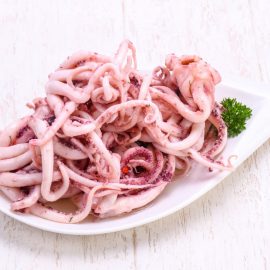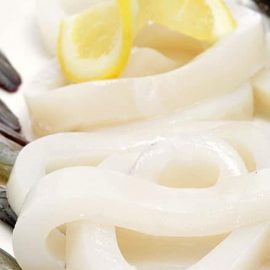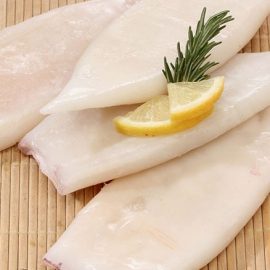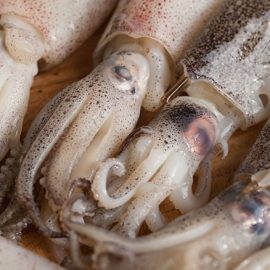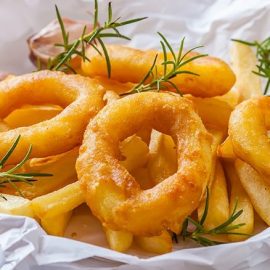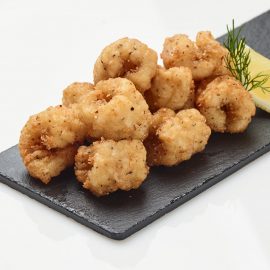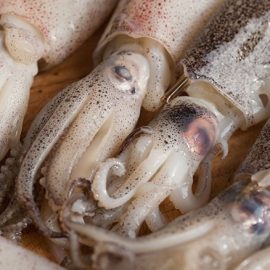
Introduction
Squids are an incredibly diverse and successful species of marine molluscs, with over 300 known species. They can be found in oceans worldwide and have adapted to various ecological conditions.
They are versatile seafood, popular in many dishes. Fresh squid can be cooked whole or cut into pieces and fried or grilled. Squid ink is also used to make sauces and condiments, while squid pieces can be added to salads or cooked with tomato sauce for an Italian-style dish.
Description & Characteristics
Squid, a cephalopod mollusc of the order Teuthida, is a food source for many cultures and can be found in oceans globally. Octopus, cuttlefish and squids are cousins; they are part of the group Cephalopoda.
They have eight arms and two tentacles, which they use to swim and catch prey. The head is broad and has two eyes, while the body is cylindrical and tapered at the end.
Squids have many unique characteristics, including their ability to swim rapidly by jet propulsion and their highly developed eyesight. They range in size from the giant squid, which can reach lengths of up to 60 feet, to smaller marine species that measure only a few inches long.
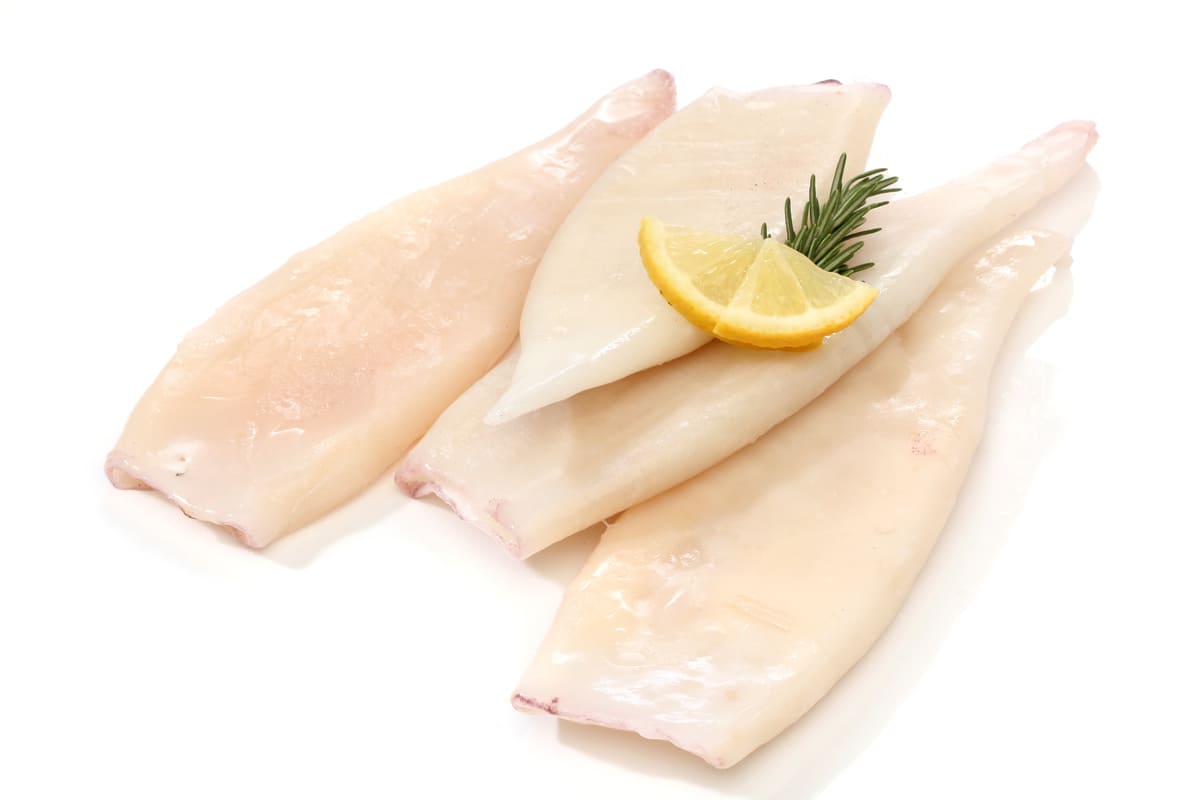
Biology
Squid biology includes an array of unique features that differentiate them from other species. These molluscs have two complex eyes that can see colour and ultraviolet light; they also possess ten sucker-bearing arms surrounding their mouths and numerous photophores around their bodies, allowing them to produce light to ward off predators or attract prey.
In addition, squid has three hearts and large amounts of chromatophores, enabling them to change colours quickly. This adaptation helps the species blend into its environment and hide from potential predators or sneak up on unsuspecting prey.
These adaptive characteristics make them successful hunters, allowing them to survive in habitats ranging from deep oceans to shallow waters close to shorelines. As such, they can inhabit a wide range of depths depending on the species type, especially the largest squid type. Some live over 3,000 meters below sea level, while others remain in shallower depths closer to the surface. In addition, they can be found throughout all marine areas, including the giant squids, from tropical climates near coral reefs to colder temperatures around polar regions.
Habitat And Distribution
The squid can be found in many habitats around the globe, from the North Atlantic to the coastal waters of Australia. They inhabit shallow waters, living in burrows or crevices, as well as open ocean regions. Their range also includes temperate and tropical oceanic regions.
Squids are particularly prevalent in the Northern Hemisphere, where they are a significant component of marine ecosystems. Several distinct species of squid are present in this region, including Loligo vulgaris and Illex illecebrosus, which can be identified by their distinctive rings and lemon wedges patterns on their bodies.
Squid Fisheries
Fisheries of squid have been an important economic activity since ancient times. Since the beginning of recorded history, humans have harvested squid for their meat and ink to use as food and dye.
Commercial fisheries target squid species such as Loligo, Illex, and Todarodes. These fisheries are found around the world in temperate and tropical waters.
Squid are caught in several ways, including trawling, jigging, handlining and purse seining. Some fishing fleets employ specially designed vessels with specialised gear to maximise their catches. Many of these vessels use sonar technology to locate concentrations of squid before fishing begins. Once found, the fishermen lower large nets into the water, which are drawn up containing the squid from below.
Squid populations vary significantly yearly due to environmental factors such as water temperature and prey species’ availability to feed on. As a result, careful management is necessary to ensure that the resource is well-exploited, especially when it comes to populations that are slow-growing or endangered.
Sustainability
The sustainability of squid is an important topic, as global squid populations have been declining rapidly due to overfishing, climate change, and other environmental factors.
According to a 2019 United Nations Food and Agriculture Organization (FAO) report, squid catches have dropped from around 3 million metric tons in 2000 to 2.3 million metric tons in 2016 – a 23% decrease in sixteen years. This has caused concern for the long-term sustainability of squid populations worldwide.
Regional governments and organisations have developed and implemented various management strategies to maintain sustainable fisheries for squid. These strategies include catch limits, protected areas, seasonal closures, gear restrictions, quotas, and other measures that help regulate fishing pressure on wild squid stocks.
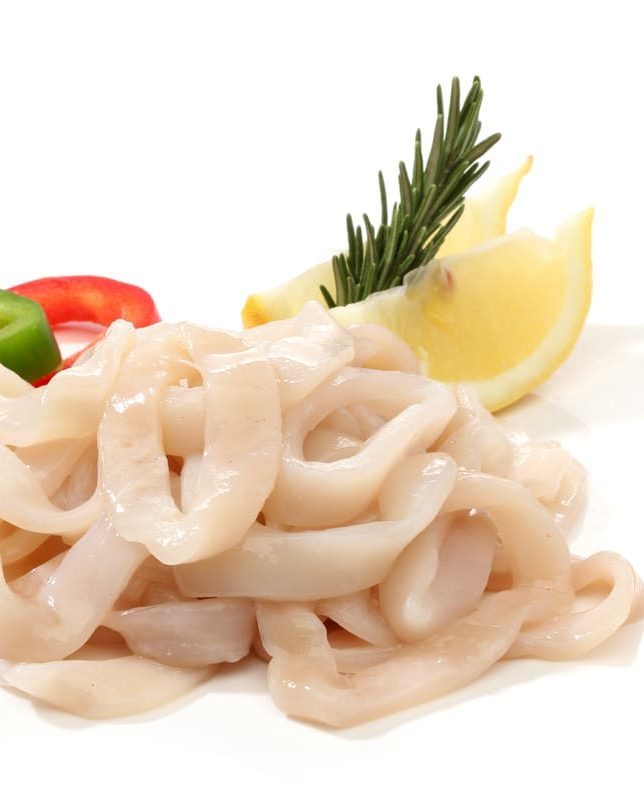
Additionally, aquaculture has become an increasingly important source of squid worldwide; however, this industry is still relatively new and faces numerous challenges, such as disease outbreaks and a lack of research into more efficient farming methods.
Overall, it is clear that proper management strategies are necessary to ensure the long-term sustainability of wild squid populations and the continued development of aquaculture operations. With adequate conservation efforts in place, there is much potential for future prosperity in the global squid fishery industry.
Life Cycle of Squid
The life cycle of a squid is a fascinating and complex process that begins with spawning in the northern Atlantic Ocean and ends with the maturation of an adult squid.
Spawning occurs when mature female squids release their eggs into the water, fertilised by the male squid. After hatching, these larvae begin to grow, searching for food and shelter as they develop into juveniles. During this stage, their bodies become longer and more distinct from other species of cephalopods.
Once they reach adulthood, squids can reach sizes of up to 6 meters long and have a firm, muscular texture that enables them to swim quickly through the ocean.
In addition to size and texture changes during adulthood, squids undergo colour changes as part of their life cycle. Their skin becomes darker in hue as they age until it eventually turns white or brown just before maturation. This change is an adaptive measure that allows them to blend in better with their environment while hunting for prey or avoiding predators.
The exact lifespan of a squid varies depending on the species but can range anywhere from one year to multiple years. Upon death, most species decompose quickly due to their high metabolic rate and soft body tissue structure.
Species And Taxonomy
Squids have long been admired for their unique and mysterious appearance, often likened to mythical creatures from another realm. Their place in the food chain is equally as remarkable, as they are an essential source of sustenance, particularly in coastal areas where other seafood may be scarce.
The most commonly known squid species is Loligo vulgaris, or common squid. It is found throughout the world’s temperate seas and can reach lengths of up to 20 inches (50 cm) when fully grown.
Other popular species include Loligo pealeii, found in North Atlantic waters; Sepioteuthis sepioidea, found in tropical waters; and Onychoteuthis borealis, which has a global distribution but prefers colder waters. All these species are edible, with fresh squid being a popular choice for sushi chefs due to its sweet flavour and delicate texture.
Squid’s Diet
The diet of the squid extends beyond just seafood items. In addition to their consumption of various plankton, small fish and crustaceans, they feed on carrion and decaying organic matter. They may even scavenge for scraps of material left behind by other marine life or birds.
Proteins and fats are essential nutrients the squid needs to meet its nutritional needs. To do this, it relies on its keen sense of smell and sight and its ability to hunt by tracking and attracting prey through water currents. With these tools, the squid can identify food sources and feed accordingly.
Significance of Squid
Squid has been a long-time staple of different cultures, so much so that it is nearly ubiquitous in many cuisines worldwide. As a result, its preparation and taste can vary drastically – depending on the region and culture. One thing remains consistent: squid is a delicious and versatile food source.
Health Benefits Of Eating Squid
Squid is an excellent source of protein, with 100 grams containing about 13 grams of protein. It is also rich in vitamins B6 and B12, minerals like magnesium and zinc, and omega-3 fatty acids.
Eating squid can help improve heart health by increasing levels of HDL cholesterol (the “good” cholesterol) while decreasing levels of LDL cholesterol (the “bad” cholesterol). Additionally, it can reduce inflammation throughout the body and help to prevent illnesses like cancer and diabetes.
Squid can also benefit those looking to lose weight or maintain their current weight. As mentioned above, it is high in protein but low in fat, making it a nutritious choice that won’t cause calorie overload. Furthermore, its high content of Omega-3 fatty acids can help improve metabolic rate and aid in efficient digestion. Lastly, its high vitamin B6 content helps to break down carbohydrates which can further support a healthy metabolism and effective weight management program.
Best Way To Clean And Prepare
Cleaning and preparing squid is an integral part of the seafood process. Understanding the best methods to ensure that the squid retains its flavour, texture, and quality while also ensuring safety is essential.
Cleaning a squid’s first step is removing its head and innards. This can be done by cutting off the head and pulling out any remaining entrails or organs contained within. After this, it is necessary to peel away the skin from around the squid’s body. To do this, lightly run a knife along the length of the body and then gently pull away the skin with your fingers.
The next step is trimming any remaining fins or tentacles before cooking.
Once cleaned and cut, the squid can be cooked in various ways, including grilling, sautéing, deep-frying, steaming, or baking.
Cooking Squids
Squid is a popular seafood dish enjoyed by people all over the world. Preparing squid for consumption can be done in various ways and requires skill and knowledge.
When preparing squid dishes, it is imperative to keep an eye on timing as overcooking can lead to a tough and rubbery texture; undercooking can lead to a chewy texture with a lack of flavour development. Cooking times will vary depending on the cooking method but typically range from 2-5 minutes for most procedures.
Marinades are also commonly used when cooking squid as they help tenderise the flesh while adding flavour and moisture.
Squid is commonly used in many international dishes and has become popular among home cooks. Below are some of the most popular recipes featuring this versatile seafood.
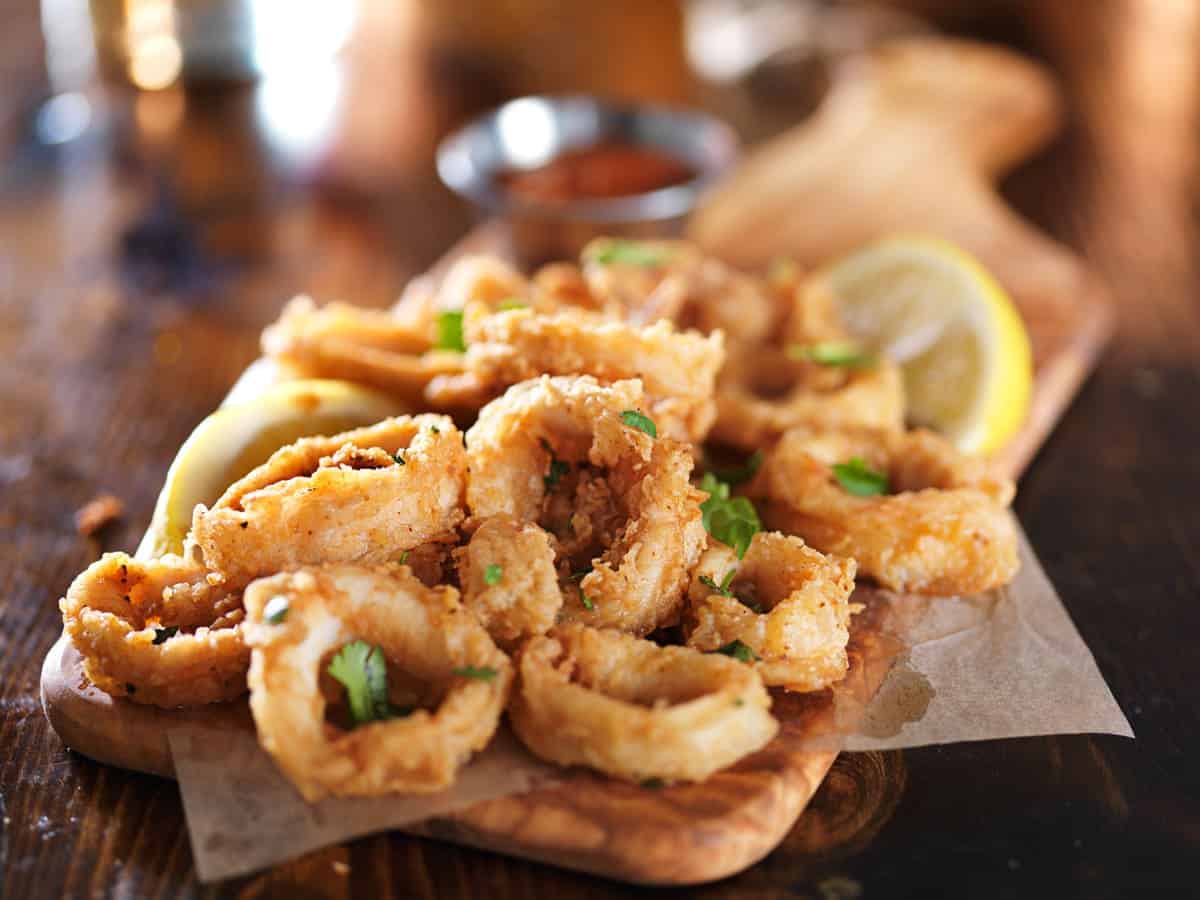
Grilled Squid
Grilled squid is one of the most popular dishes featuring this ingredient, and it’s especially popular in coastal regions everywhere. The squid is marinated in garlic, lemon juice, and herbs before being threaded onto skewers and cooked over an open fire or charcoal grill until lightly charred. This dish packs a ton of flavour with minimal effort!
Stir-Fry
Another way to cook squid is by stir-frying it with vegetables like bell peppers, onions, carrots, and garlic. To make this dish even more flavourful, try adding Thai basil or cilantro for an extra kick! You can add nuts like peanuts or cashews to the mix for added texture. Once everything is cooked through, enjoy your stir-fry with steamed white rice or noodles for a complete meal.
Deep-Fried Squid
Lastly, deep-fried squid is another classic recipe that will please everyone at the table. The squid rings are coated in flour and spices before being fried until golden brown. Serve it with tartar sauce or your favourite dipping sauce for extra flavour!
No matter how you choose to prepare your squid dish, always remember to buy fresh and never frozen seafood for optimal results. When cooked correctly, squid can be delicious and satisfy picky eaters!
Best Side Dishes Paired With
In addition to being a popular dish, squid can also be served as part of side dishes. Some of the most popular side dishes that pair well with squid include:
- Rice – Rice is the perfect accompaniment to squid dishes. Its neutral flavour allows it to absorb the taste of the other ingredients and spices used in the dish without overpowering them. The texture also helps to balance out the softer texture of squid.
- Vegetables – Cooked vegetables can make a great side dish when paired with squid. They are nutritious and have a variety of flavours and textures that work well with the mild taste of squid. Popular choices include broccoli, cauliflower, carrots, mushrooms, or spinach.
- Salad – A salad made from fresh greens or grains such as quinoa can provide a refreshing contrast to a richly flavoured squid dish. Leafy greens like arugula or kale can add crunchiness and colour to your plate while adding vitamins and minerals to your meal.
- Sauces – Adding sauces such as teriyaki or pesto can give your meal an extra flavour while allowing you to enjoy the taste of the squid itself. These sauces also help bring out some sweetness in the seafood while providing depth and complexity in their own right.
Different countries prepare their squid dishes differently, so finding a good side dish might require experimentation until you find what works best. With these options, though, you should be able to find something that pairs nicely with your favourite squid dishes, no matter where they come from!
Conclusion
As versatile as it is delicious, squid can provide a flavorful feast if prepared correctly. Like a chameleon adapting its colours to its environment, this seafood delicacy can take on whatever flavours you choose while providing an abundance of nutritional benefits and unique taste – making it an ideal addition to any meal!

